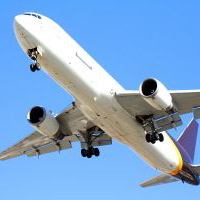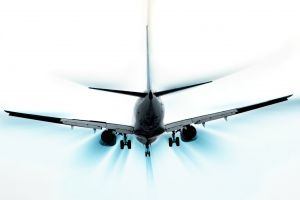Fear Factor in Air Travel Industry Yields Gloomy Projections Amid Recession
 Consumer fear over our crashing economy has resulted in an ugly year for travel, and it’s only going to get worse, according to airline industry-analysis firm Boyd Group International.
Consumer fear over our crashing economy has resulted in an ugly year for travel, and it’s only going to get worse, according to airline industry-analysis firm Boyd Group International.
The report, entitled “USA Enplanement Forecast for 2009 – 2014,” the U.S. airline industry can expect to see more than 41 million fewer passengers on board in 2009 as compared to 2008.
That’s equal to about 50 million individual enplanements (“enplanements” literally refers to passengers getting on a plane, which takes into account travelers on connecting flights; each passenger represents about 1.21 enplanements).
By 2010, the Evergreen, Colorado-based firm projects a baseline of nearly 59 million fewer passengers, and 53 million fewer passengers in 2011. If the economy continues on its expected path, there will be 185 million fewer enplanements over the next three years, compared to what it would be if emplanements maintained the same levels of 2008.
The number of passengers may not bounce back to 2008 levels until after 2014, and that’s only assuming that the country becomes economically stable in 2011.
To come up with these figures, the Boyd Group analyzes various factors such as local and national economics, demographics, airline trends, and fleet shifts.
However, this year there is a “new and very dangerous dynamic” that is also affecting air travel known as the “consumer fear quotient.” Massive layoffs have resulted in fear of spending; business spending has dropped significantly; and even major discounting from troubled airlines isn’t going to be enough to get someone to travel when they’re holding tightly onto their dollars.
 The proposed federal economic stimulus package isn’t helping matters, says Boyd Group President Mike Boyd. “Everywhere you go, we’re hearing that we’re in trouble, the world is collapsing, even if we get this stimulus going, it’s going to take years. When you tell people that, you’re guaranteeing that people aren’t going to fly.”
The proposed federal economic stimulus package isn’t helping matters, says Boyd Group President Mike Boyd. “Everywhere you go, we’re hearing that we’re in trouble, the world is collapsing, even if we get this stimulus going, it’s going to take years. When you tell people that, you’re guaranteeing that people aren’t going to fly.”
The better option, says Boyd, “is to tell people that we’re going to fix the damned thing.”
The report also points out that, according to news sources, of the nearly trillion-dollar stimulus, less 10 percent will go to infrastructure, and about $5 billion would go to aviation.
Lack of spending, of course, means a major decline in airline revenue. The airline industry is already expected to cut more than 10 percent of capacity compared to 2008. But even assuming these cuts are successful (i.e. resulting in high load factors), the industry will experience a revenue decline of almost $7 billion in 2009, and over $9 billion in 2010, compared to 2008.
This decline will also result in a projected $4.9 billion drop in federal taxes paid by the airlines through 2011, and a baseline drop of nearly $574 million in Passenger Facility Charge revenues. Since these taxes and fees often go toward airport upgrades, this could have a negative impact on economic stimulus plans and job creation.
By Sarika Chawla for PeterGreenberg.com.
Related Links: Dallas Business Journal, Aviation Planning
Get more air travel news in our Airlines & Airports section.
Check out these related articles on PeterGreenberg.com:












